Wing Stand
The workshop is starting to come together...
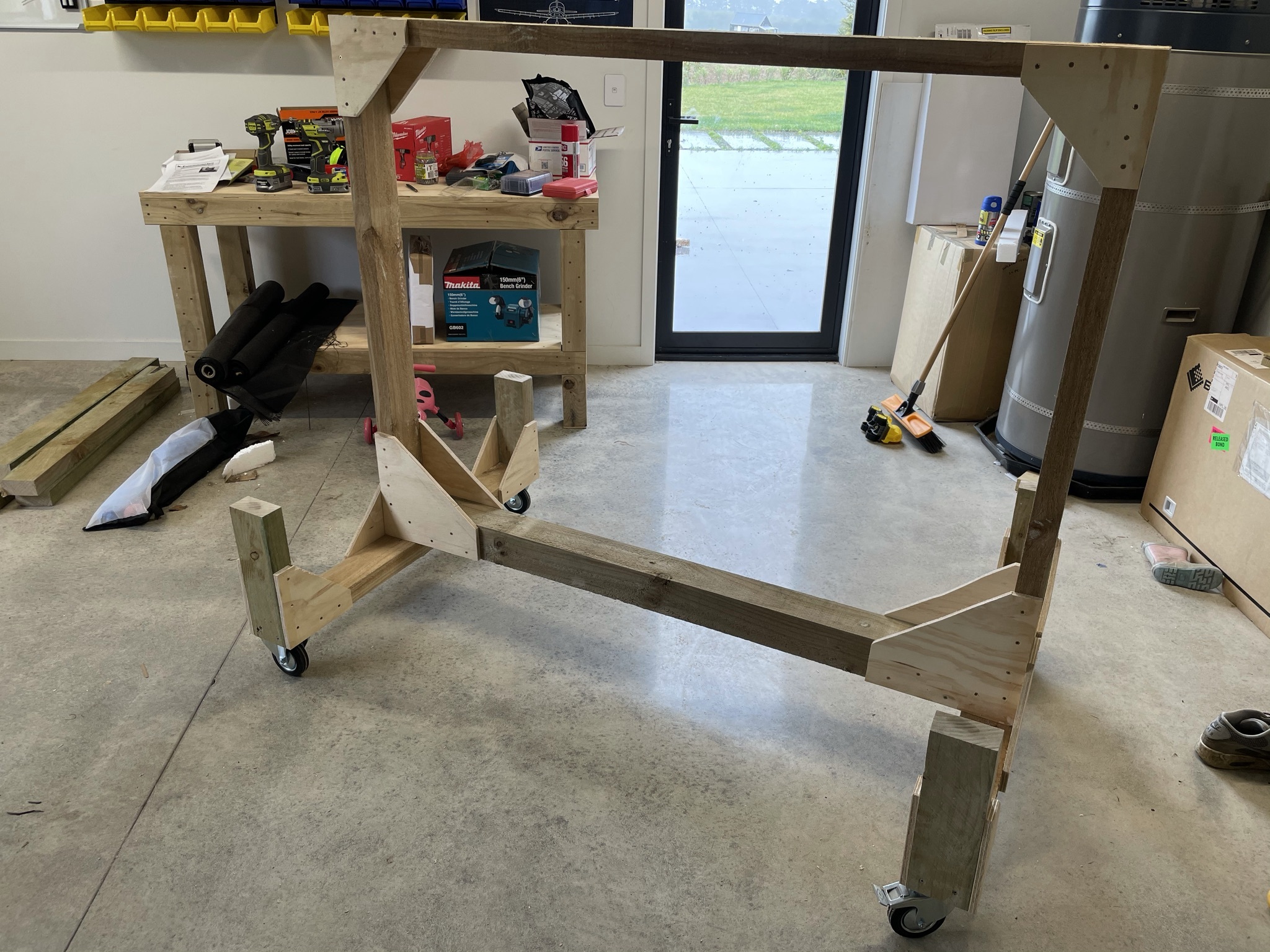
This is another helpful tool from the EAA archives. The QB wings can be stored here in the interim while the rest of the aircraft is completed, and potentially transported to the airport on. I've put locking and steerable casters on the base to make it easier to reposition.
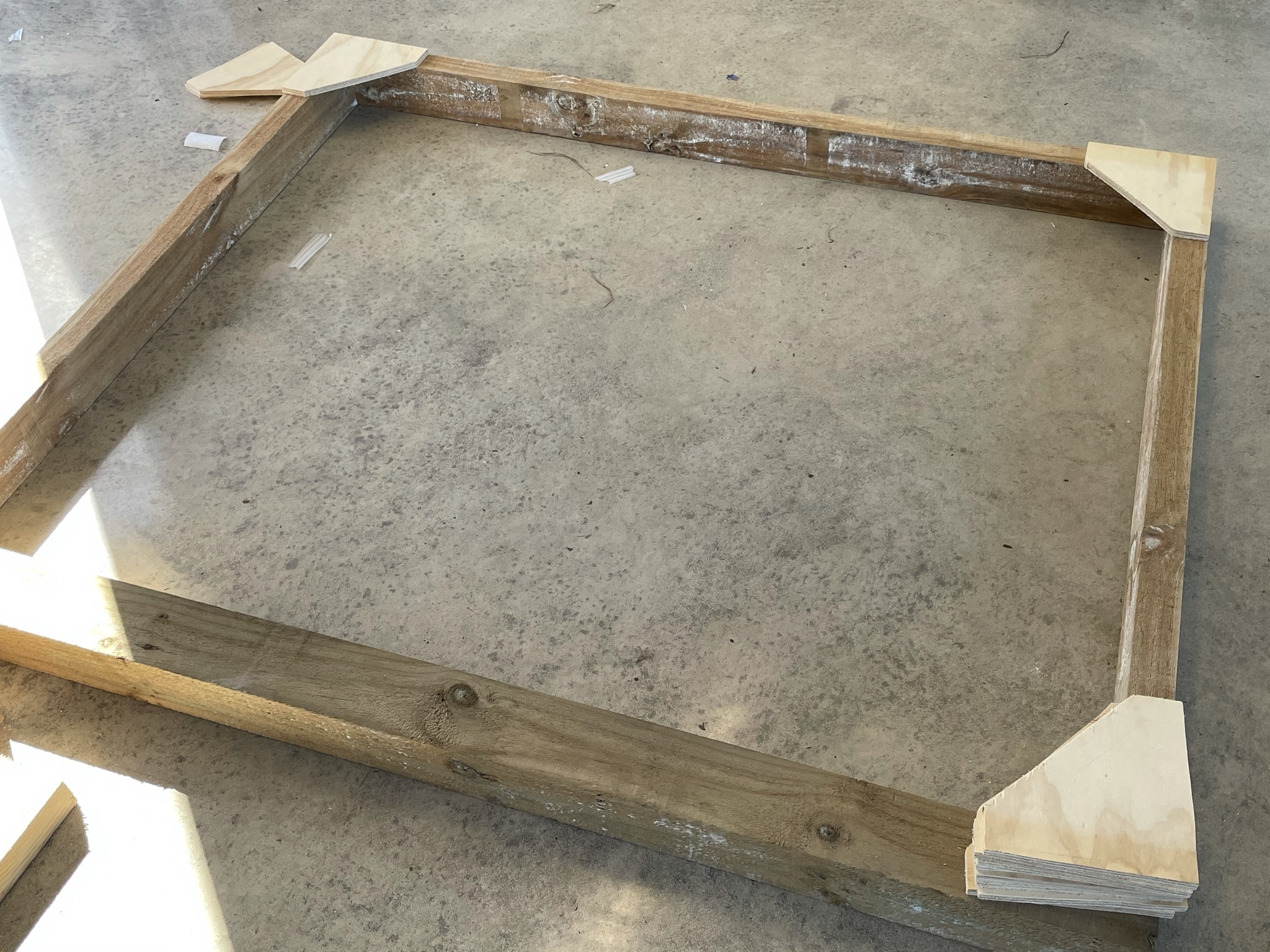
Also a good excuse to buy a jig-saw.
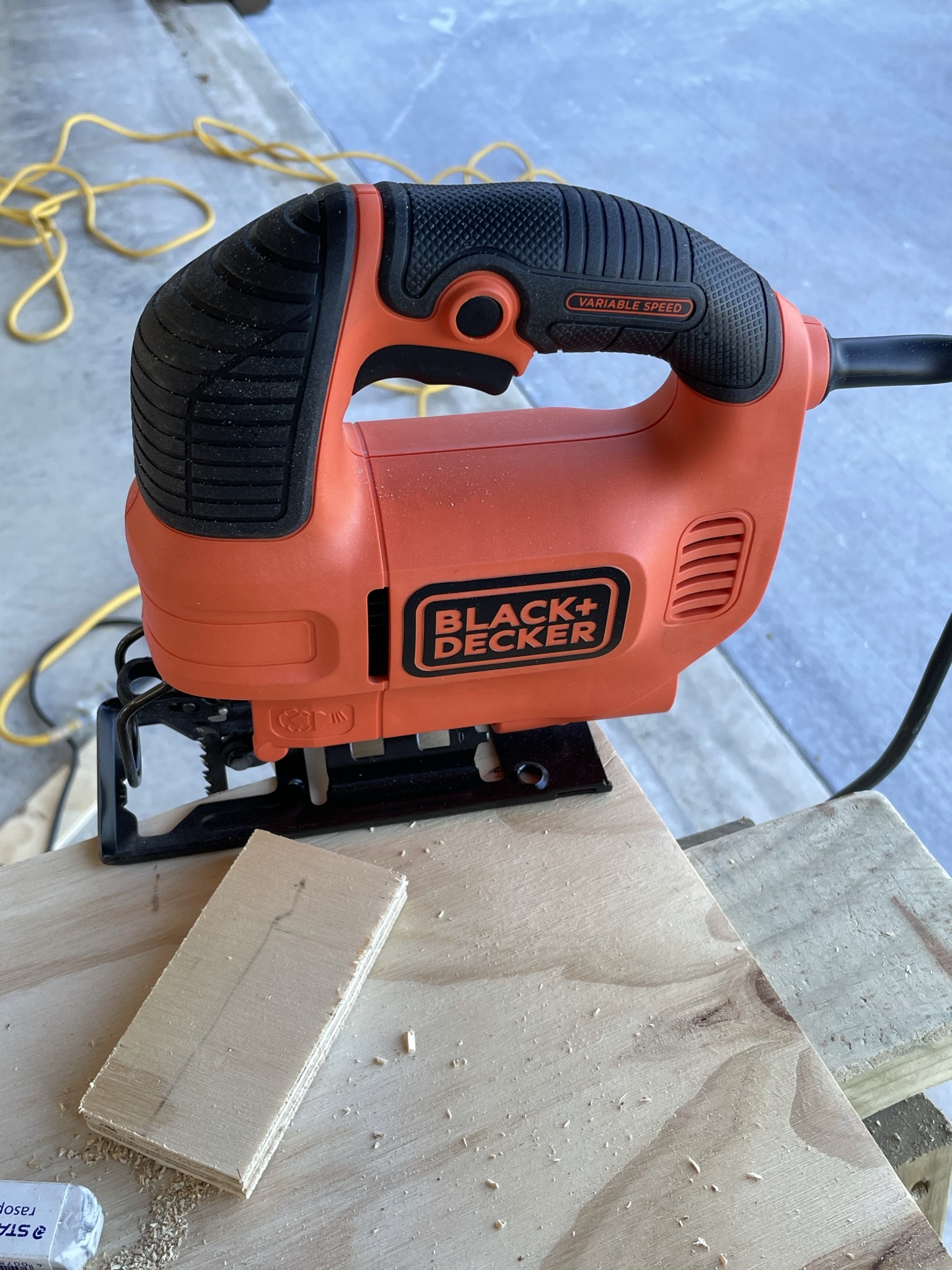
DRDT-2 completed
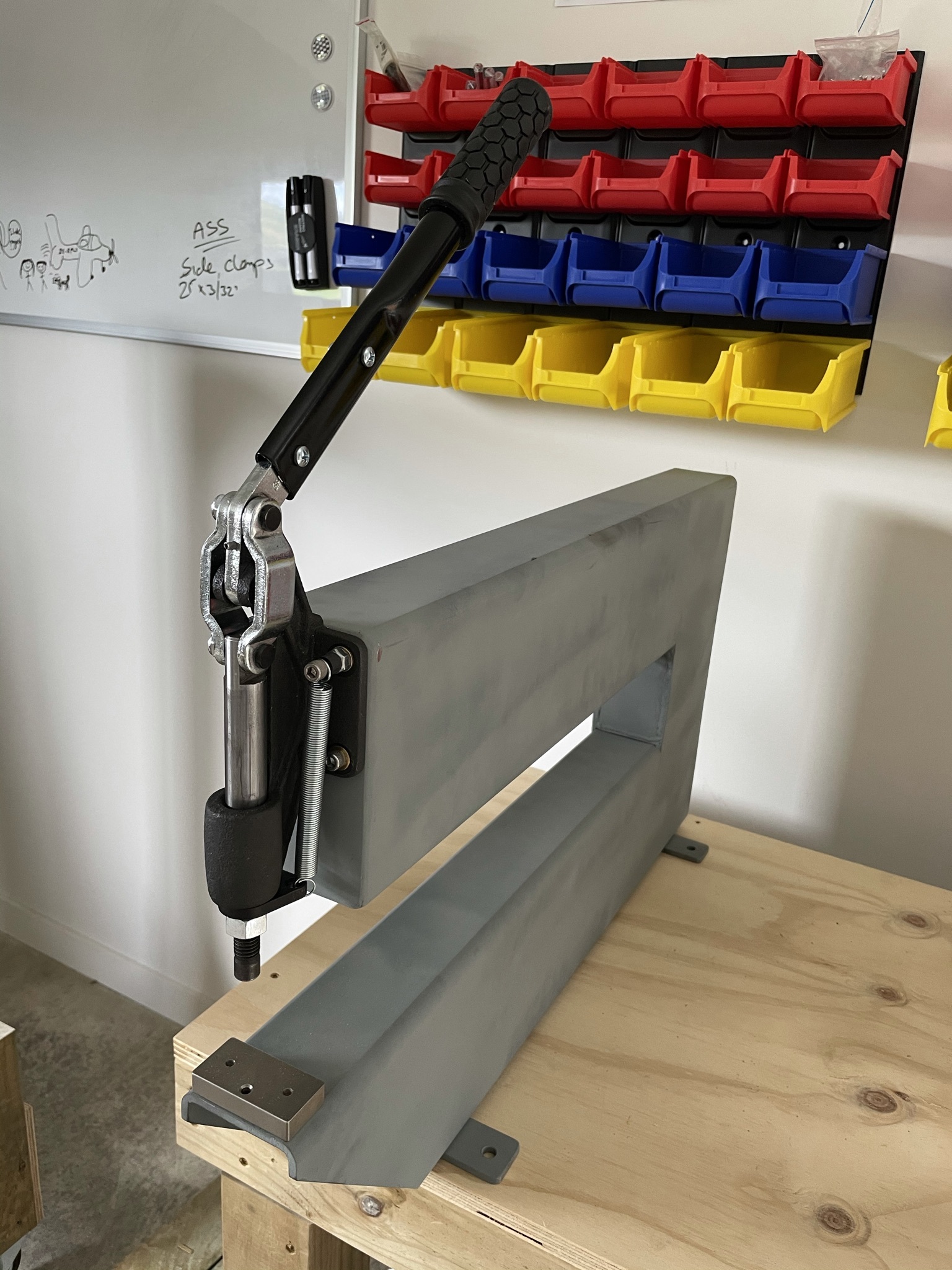
I had a chance to assemble my DRDT-2 as well. The frame was made locally and looks to be a nice job, although the bottom die receiver might be a bit far forward. I'll have to wait til the dies arrive with the tail kit to test alignment. The lower mounting holes should be able to be enlarged to allow for fine-tuning the position.
They made one modification, which was to use 4" tubing horizontally between the base and top arm, rather than trying to precisely cut 6" tubing. Came out great I think.
Hamilton (NZHN) Trip
I needed to make a day trip up to Hamilton (3.5 hr drive) last week, and the weather has been beautiful all week, so why drive when you can fly!
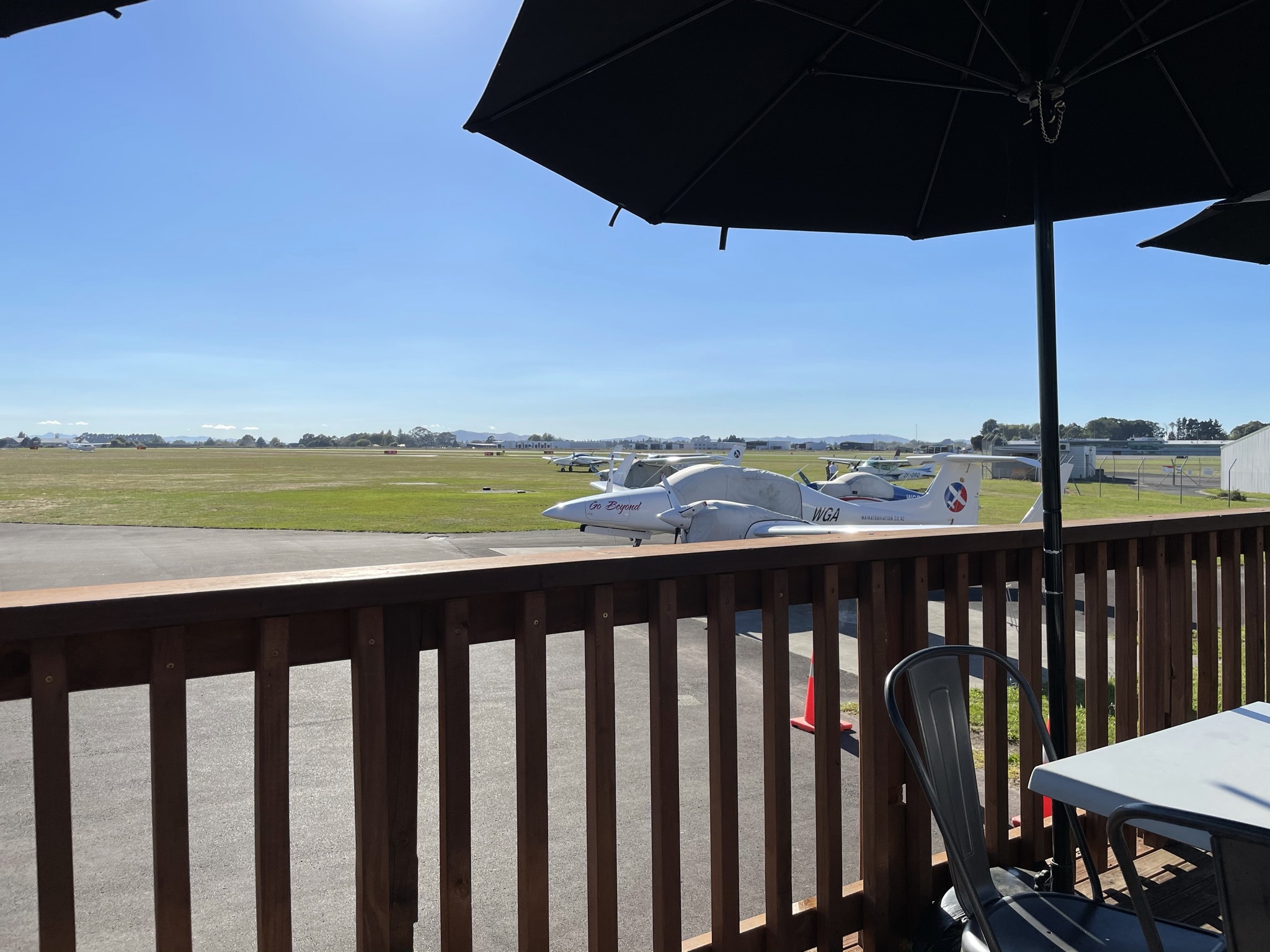
Great to get some solo time in the 172. Initially controlled VFR out of NZNP at 5,500 feet, north via Te Kuiti (NZTT) and cleared direct through NZHN's control zone to the crosswind grass runway 07, then "turn right — anywhere!" from the tower to the aero club.
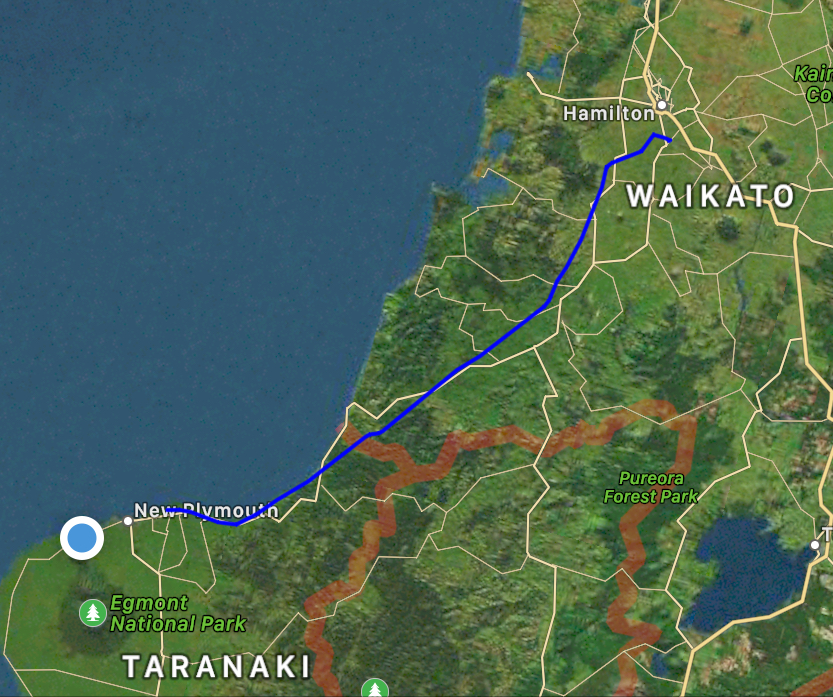
Always slightly intimidating coming into a bigger controlled airport for the first time but the tower obviously have a lot of training GA traffic and were very helpful. Will be even better not having to hire a plane to do it!
CAA NSS Roadshow
Since we flew up to Hamilton I was able to make it back in time drive down to Hawera and attend the CAA New Southern Sky roadshow presentation held at the aero club (NZHA). Although weighted toward aircraft owners needing to equip for ADS-B by December 31, 2022, it was a good update on the overall new navigation and surveillance systems coming to NZ airspace.
Unexpected good news was that in association with Australia (Geosciences Australia and CASA), we will be getting a Satellite-Based Augmentation System (SBAS) by 2025. This works with ground stations which apply a correction to their GPS position, then send it up to a geostationary satellite which in turn is then sent to aircraft to refine their GPS position.
They were able to confirm my suspicion that ongoing GNSS navigation in NZ would require a backup NAV radio, that RNAV approaches will be progressively transitioned to RNP, and that the 11/EXE/7 exemption for GNSS sole-means navigation would be withdrawn.
However they did acknowledge my planned equipage was probably reasonable for private (Part 91) single pilot IFR and I've sent them a bunch of followup questions to clarify this.
Electrical system and avionics update
I've been working on an electrical analysis, based on a fellow builder's template. I'll post up mine once it's final, but he's using a 915iS for his Sling 4 so the numbers should be very similar.
As mentioned previously, I'm planning on a second COM radio mounted remotely (GTR 20) but a single GPS navigator (GTN 650 Xi). There are still 3 other GPS receivers in the cockpit (2x G3x and the G5). I think this is more than redundant enough for IFR, although these backups are non-WAAS and non-TSOed.
The issue is that the typical IFR load calculated for this is 22-23A, so ~75-80% of the Rotax 915 iS' generator B output. Transient loads above 30A can be provided by the battery, but if a generator fails in flight, the engine will commandeer the remaining generator to run the ECU and ignition and the avionics will then chew through battery quickly even with load-shedding. I'm therefore more or less convinced to get the optional external alternator (~$3K USD), and will ask the factory to provide the modified cowling design to fit it under.
I'd previously considered and ruled out the VP-X electronic circuit breaker in favour of old-fashioned discrete mechanical breakers, however as the electrical system is now likely to be relatively complex I'm reconsidering it. The company does have reasonable longevity and seems to be popular with the RV crowd. A few notable builders seem to be using it as well.
The other question I'm mulling is the transponder. The GTX 45R remote transponder is cheaper, however can only be controlled through the G3x and requires an external GPS source for ADS-B, although this can be provided by the GTN. The certified GTX 345R can be controlled via the G3x or the GTN, and has options for either an internal GPS source, or a diversity antenna (top and bottom of aircraft) which will be beneficial once SBAS comes in. However it is $2K more expensive and hopefully diversity will be added to the 45R, which will make them functionally equivalent for experimental use.
Build Videos
Builder Evan Brunye has just finished and flown his great-looking and extremely well built TSi and is now running build assists, and has also been making a build video series in conjunction with the factory. These are fantastic so far and very timely for me. Hopefully these will end up covering more or less the entire build. Counting down the days till my empennage arrives now...